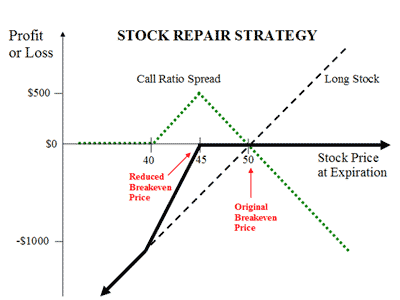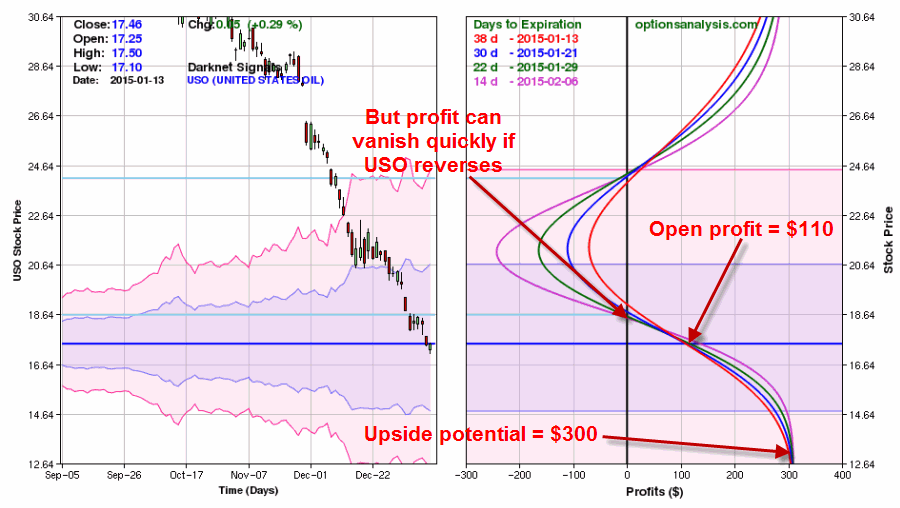Options Strategy Time Spread
Post on: 18 Июль, 2015 No Comment

Description
A Time Spread (A.K.A. — a Calendar or Horizontal Spread) involves buying a Call (or a Put) with one expiration and writing the same strike Call (Put) with an earlier expiration.
Risk/Reward Characteristics
The profitability of Time Spreads depends on whether or not the stock price is near the options strike price when the near-term option expires. It doesnt matter if it is above or below the strike price — the closer, the better.
Break-even Point: The spread has two break-even points — one some distance above and the other some distance below the spreads strike price. If XYZ moves significantly away from the strike price, losses will be incurred.
Time Decay: At first, the profits for an ATM Time Spread are small as time decay slowly erodes the short option. At about 5-6 weeks prior to expiration, rapid time decay begins to affect the near-term option. ITM and OTM Time Spreads gain very little from time decay, since there is little time value to erode in the short option.
Volatility: Time Spreads are sensitive to changes in the implied volatilities of their options. An increase benefits the spread, while a decrease hurts the spread.
Assignment Risk: As is the case with all written options, the investor must continuously monitor the spread for possible assignment of in-the-money options prior to their expiration.
Example
An investor is bullish on XYZ. However, that bullishness is tempered by some near-term concerns about either XYZ, its industry group, or the overall market in general.
Thus, because of these concerns, the spread must have both limited risk and negligible near-term time decay.
While these concerns may darken the near-term prospects, XYZ is expected to rally shortly after mid-August.

Therefore, the investors opinion can be summarized as neutral for the next 50 or so days, then bullish!
This Time Spread reflects the investors expectations while at the same time taking into consideration the investors risk/reward tolerance level.
First, with regard to risk, this spread involves both a written option as well as a long option. Because of the long option, the written option is considered covered. Also, no matter what happens to XYZ, the spreads maximum loss is limited.
Second, if XYZ is near $60 in mid-August time decay will be positive due to the near-term option decaying faster than the farther-term option.
Finally, if the investors expectations are correct and XYZ is near $60 at Augusts expiration, the investor will be left with a position that is either already a bullish position or one that can be easily converted into one:
If XYZ is below $60 at expiration, the investor will be long the remaining 60 Call (a bullish strategy!) for a price equal to the initial debit of the Time Spread (5 1/8 — 3 1/4).
If, XYZ is just over $60, the investor can buy back the expiring Call and own the remaining Call for a price equal to this closing debit plus the initial debit.














